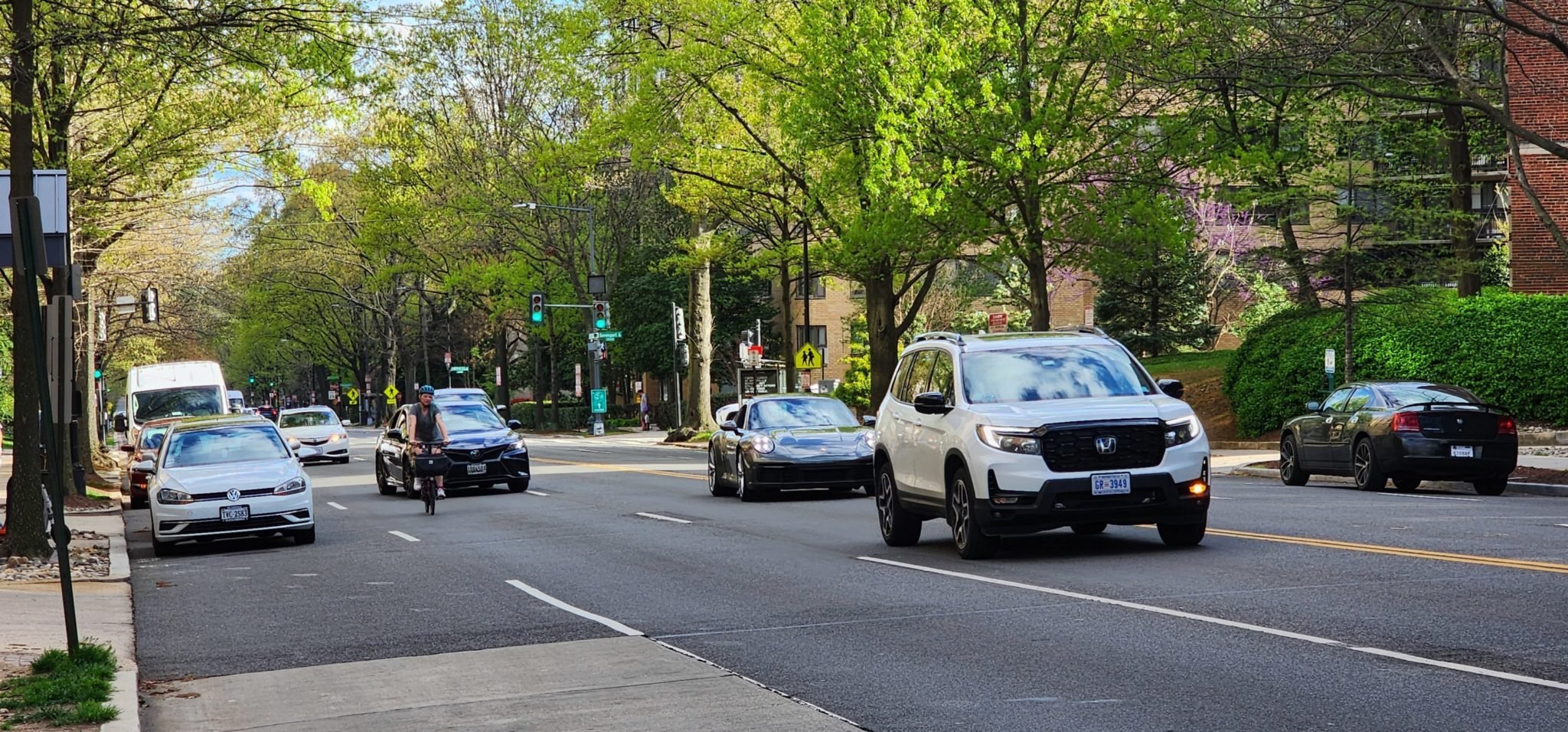A long-uncertain plan to add protected bike lanes to an over three-mile portion of Connecticut Avenue in Northwest DC has been officially canceled, according to city officials. But is this really the end of the battle between those who favor the lanes and those who oppose them?
Executives at the Washington Area Bicyclist Association tell Washingtonian that they are gearing up to push back against the decision. On their website, they’ve posted a petition to restore the plan for bike lanes, and they are currently making plans to speak out at upcoming DDOT hearings.
In case you haven’t followed all the ins and outs of this fight, here’s a quick recap:
- A 2020 DDOT presentation for redesigning Connecticut Avenue in order to make it safer featured four options—three of which included protected bike lanes of some sort.
- In 2021, DDOT and Mayor Bowser committed to “Concept C” as a part of the Connecticut Avenue Multimodal Safety Project, saying the plan would “move us closer to a greener DC, a safer DC, and a DC that is less reliant on cars.” The updated traffic design proposed a number of safety changes for the accident-prone roadway, including the addition of two bike lanes going in either direction from the Maryland border to Calvert Street in Woodley Park.
- Early last year, DDOT leadership announced that the project would enter a “re-evaluation phase,” and there might be changes to the design of Concept C.
- At Thursday night’s DC Council transportation budget hearing, DDOT Director Sharon Kershbaum announced that the project will move forward without bike lanes.
“The inception of the project was a safety project, it has always been a safety project. . . and somehow over the years, it kind of morphed into a bike project” Kershbaum said, after Councilman Matthew Frumin asked for updates on the project. “I know there’s disappointment from people who were really advocating strongly for a bike lane.”
This news confirmed the fears of one of those biking advocates, Elizabeth Kiker, executive director of the Washington Area Bicycling Association (WABA): “They’ve been stalling and stalling for years at this point, so this announcement feels like something that we sort of knew was coming, but didn’t know about at the same time. It’s really brutal.”
Adding protected bike lanes to the busy avenue has been a major initiative of the cycling advocacy group for years, which says that the six-lane, 30-mph roadway posed dangers for pedestrians, drivers, and cyclists alike. “It’s not designed for biking,” Kiker says. “It’s not even designed for pedestrians or people at all. It’s designed to move cars really fast. In a dense city like ours, that is unsafe.”
The street was deemed a “High-Injury” Zone by Boswer’s Vision Zero Project—an initiative that began in 2015 with the promise of eliminating fatal crashes in the District by 2024. A study from DDOT at the start of the project showed a total of 1,507 police-reported crashes along the Connecticut Avenue NW study corridor from 2015-2019; just last year, the area saw a fatal crash near the National Zoo.
“Connecticut Avenue is unsafe and problematic for everyone,” says WABA Director of Advocacy Jeremiah Bowery. “DDOT knows this. The mayor knows this. That’s one of the reasons why this is so disappointing. Despite the years of research and data, the mayor has made this decision to turn away from it. It just leaves me wondering: What did she base her decision on?”
The Concept C redesign had largely received support amongst community leaders, with Committee on Transportation and the Environment Chairman Charles Allen and Ward 3 Councilmember Matthew Frumin as notable supporters, and near-unanimous support from ANCs in Ward 3. “There’s many people in DC that support these safety measures,” Kiker says, “but there’s a loud minority that opposes them, and they are now being listened to.”
The most vocal opposition group was “Save Connecticut Avenue,” which sprung up in 2022 to express concerns about traffic congestion and the loss of parking spaces for local businesses, creating a petition which has since gained over 3,000 signatures. In a statement to WUSA9 Friday morning, the group thanked DDOT and Mayor Bowser “for recognizing the danger these bike lanes would have posed to residents, zoo visitors, service providers, the mobility challenged, the disabled, businesses and emergency responders.”
WABA thinks that these types of concerns don’t hold up to the evidence about public safety. “There are plenty of people out there that have opinions about projects like this,” Bowery says. “But I would hope our governmental officials are basing decisions based upon research, rather than basing them upon opinions.
“At least now we know exactly where the project stands. So we can start getting really mobile again, and publicly explain how important streets are for people, not just cars,” Kiker says.
At the Thursday hearing, Kershbaum said other Connecticut Ave. safety changes are coming soon, and DDOT is currently working on a 5-year plan to address gaps in bicycle infrastructure across the District, including a North-South bike lane in Ward 3 that may or may not include Connecticut Ave. at a later date.


















